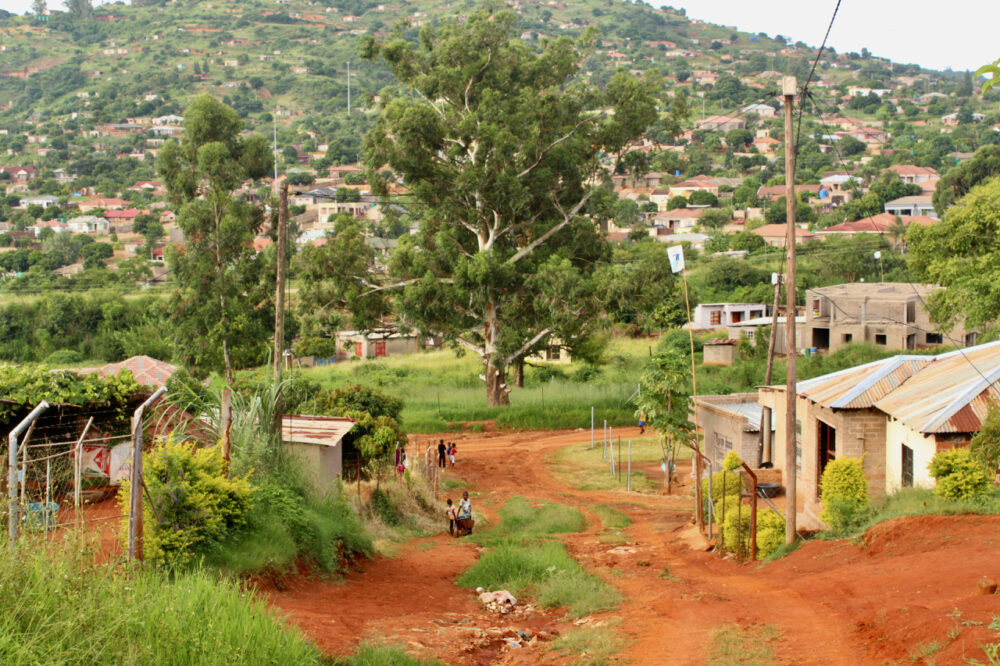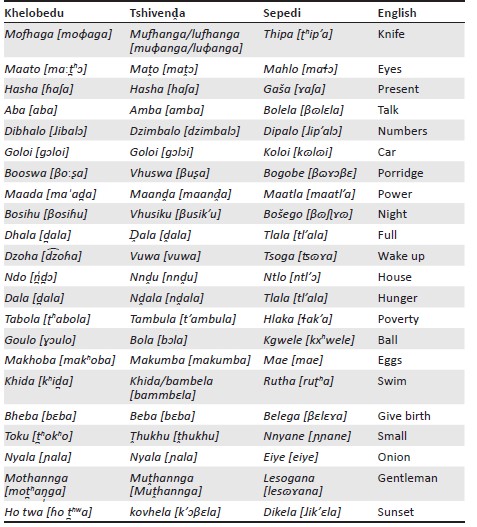South Africa's official African languages mask dozens of dialects, affecting millions, especially in rural areas
In the dim glow of a fireside in Ga-Kgapane, Limpopo, a small boy recites Khelobedu proverbs to his grandmother, his voice weaving tales of rain queens and resilient harvests. “Khelobedu akhe rowane kheya reta,” he says (“Our language praises, not curses.”)
Yet the next morning, as he steps into his primary school, all his Foundation Phase textbooks and readers are in Sepedi, a close but foreign cousin, leaving him lost in translation. Required to do written and oral tests in Sepedi, this bright child’s light is slowly dimming. He is one of thousands of Khelobedu-speaking learners grappling with a system that erases their language from the start.
South Africa’s official African languages mask dozens of dialects, affecting millions, especially in rural areas. Khelobedu, spoken by over a million people in Limpopo’s Mopani District, is formally classified as a Northern Sotho dialect. Balobedu children are forced to learn in Sepedi despite phonetic clashes — “khe” versus “se” — and key differences in vocabulary and structure.
The crisis in numbers
These under-researched disparities may explain anomalies in the 2021 Progress in International Reading Literacy Study (PIRLS). African language learners perform worse on “home” language tests than those taking the test in English.
The PIRLS data reveal that Grade 4 learners taking the test in Sepedi (including Khelobedu speakers) scored the second-lowest in the country, with an average of 216, well below the Low International Benchmark of 400. This means less than 5% of Sepedi learners could read for meaning.
For dialect speakers like those in Khelobedu, the crisis is amplified. One critical study found that when the African language of the test did not match learners’ home language, results were worse, substantially impacting reading comprehension.
A 10-year-old girl from Ga-Kgapane puts it simply: “I cannot speak and write it (Sepedi) very well, as at home I speak Khelobedu and I tend to write it the way I speak it.”
Her experience reflects findings from Funda Wande showing that half of Sepedi-taught learners struggle with basic reading — massive language disparities force rote memorisation over deep comprehension. Parents report children refusing to read aloud for fear of ridicule. The result is disengagement and a decline in confidence.
From grades R to 3, learners must use what is effectively a foreign dialect to learn reading, writing and all subjects. Teachers improvise by using Khelobedu to teach reading in Sepedi and explain mathematics. Classrooms are considerably brighter with this informal translanguaging, as it blends Khelobedu and Sepedi to illustrate concepts. But policy bans it.
From Grade 4, the language of learning and teaching switches abruptly to English for all subjects except home language. Here again, Khelobedu is used heavily by teachers to bridge understanding.
 Loss of heritage: Ga-Rapatsi, a village in the Bolobedu area of Limpopo, the home of Khelobedu. Ga-Kgapane Public Library has no Khelobedu
books, contributing to a decline in cultural pride and language proficiency. Photo: Supplied
Loss of heritage: Ga-Rapatsi, a village in the Bolobedu area of Limpopo, the home of Khelobedu. Ga-Kgapane Public Library has no Khelobedu
books, contributing to a decline in cultural pride and language proficiency. Photo: Supplied
Not a single book
The difference for the Khelobedu is that there isn’t a single textbook or reader in their language. Principals lamented the lack of dictionaries, storybooks and dual-language texts. There isn’t a single Khelobedu children’s book in publication.
Researchers, such as Maryanne Wolf, link deep reading to empathy and critical thinking through neural circuits. Khelobedu children have no books in their own language they can read deeply. For obvious reasons, they struggle to read in Sepedi or English. In other words, they don’t read deeply at all.
Ga-Kgapane Public Library has no Khelobedu books. Limpopo’s Department of Sports, Recreation, Arts and Culture excluded Khelobedu from the 2025 Literary Competition, diverting resources to official languages, and has failed to support the development of a Khelobedu publishing industry.
The absences contribute to a decline in cultural pride and language proficiency. Parents fear a total loss by the time their children reach upper primary; elders note that youth are forgetting traditional poems at gatherings. Without familiar narratives — like Zwireto zwa KheLobedu poetry celebrating rain and family — learners miss emotional connections to reading.
A national pattern
This pattern repeats across South Africa. In the Eastern Cape, isiMpondo or isiBhaca speakers struggle with standardised isiRharhabe isiXhosa. The mean PIRLS score for isiXhosa is 257, higher than for Sepedi, but suggesting that only about 13% of Grade 4 learners tested in isiXhosa could read for meaning.
Research by Rhodes University’s Eslinah Maqam on Bizana in the Eastern Cape found that isiMpondo children have minimal exposure to standard isiXhosa at home and learn to speak, read and write it at school.
UCT education researcher Xolisa Guzula has warned that standard isiXhosa has the potential to fail children whose dialects — isiHlubi, isiBhaca, isiBomvana, and isiMpondo — were not included in the standardisation process. Studies have shown that dialects and code-switching have a negative impact on literacy and numeracy scores.
A TUT research paper published last year confirms that the use of Khelobedu as a medium of instruction would help learners overcome linguistic barriers. Khelobedu learners use Khelobedu words in their writing and spell Sepedi words in the same way they are pronounced in Khelobedu.
A study on township schools finds that standard African languages are not the learners’ multilingual lok’shin dialects. Poor academic performance is primarily attributed to teaching in a language that differs from the one children speak.
The NEEDU report analysed analysed the mismatch between home language and language of instruction in African language medium classrooms, attributing this to the dialectisation (use of non-standard forms) of African languages. The standardisation of African languages during colonialism created official varieties that don’t represent the linguistic reality of many learners. Yet, this colonial legacy continues to be treated as if it represents authentic “home language” instruction.
University of Limpopo research amplifies the urgency. A 2021 study by Mpho Letsoalo explores how Khelobedu’s linguistic differences permeate standard Sepedi writing, eroding literacy among first-language speakers. Ramothwala’s 2024 work argues for reclassifying Khelobedu as a distinct language to dismantle these barriers.
Dialect isn’t the only reason African language learners perform dismally. GADRA Education’s Kelly Long notes English benefits from deeper research, better materials and more teacher training.
Children encounter written English everywhere — on signs, screens, in shops — while written isiXhosa or Sepedi remains largely confined to classrooms. English-medium schools are also typically better resourced, with smaller classes and libraries.
In Makhanda in 2025, 50% of the Grade 4 children in the town’s four fee-exempt English medium schools — the vast majority of whom are isiXhosa home language speakers — could read for meaning compared with 25% for kids in isiXhosa medium schools.
 An illustration by TUT researchers Tebogo Rakgogo and Itani Mandende of the lexical differences between Khelobedu, Tshivenda and Sepedi. Khelobedu is regarded as a dialect, while Tshivenda and Sepedi are official languages of South Africa.
An illustration by TUT researchers Tebogo Rakgogo and Itani Mandende of the lexical differences between Khelobedu, Tshivenda and Sepedi. Khelobedu is regarded as a dialect, while Tshivenda and Sepedi are official languages of South Africa.
Solutions are possible
Early readers and textbooks in Khelobedu could transform the problem. Local voices from the 2023 petition to the PANSALB urge recognition of Khelobedu as a distinct language. Authors like Makgwekgwe Waa-Mampeule have paved the way, self-publishing Makgwekgwe le zwiema zwa Khelobedu in 2023 — a collection of stories celebrating Balobedu folklore — despite distribution hurdles. Oral stories by community elders could be captured in print. Sepedi materials can be adapted with dialect variations. Digital apps could provide scalability.
The government’s 2024 mother-tongue-based bilingual education policy has extended mother-tongue instruction to Grade 4, with Eastern Cape pilots showing significant gains. This approach could be applied to dialect resource development through targeted pilots, drawing on the R57 million allocated in the 2025 DBE budget for the MTbBE rollout, including the development of graded readers in African languages.
Yet while funds exist for foundational literacy materials, implementation lags in dialect-specific adaptations — budgeted but bottlenecked by procurement delays and a one-size-fits-all approach. Greater DBE engagement with stakeholders, including teachers through unions, researchers, and learner councils, could ensure these resources resonate.
Foundation teachers could be trained in translanguaging workshops, partnering with universities such as Rhodes, Limpopo, and Pretoria, as well as the DBE. DSRAC could fund orthographies and stock libraries with dialect materials, leveraging heritage language grants.
Thabo Ramothwala’s 2024 Mopani study demonstrates that integrating Khelobedu into math and life skills enhances problem-solving
and understanding.
A child’s future
Imagine a child in Ga-Kgapane reading a Khelobedu story-book, mirroring their fireside tales — visualising rain queens, grasping concepts in their own tongue
before transitioning to Sepedi and English. Confidence soars, neural networks fire, empathy builds and heritage thrives.
Or imagine the alternative: another year of sitting silent in class, another generation of cultural knowledge lost, another cohort of bright children convinced they can’t read. No child should be silenced by alien words and grammar in what’s labelled their “home language”.
South Africa must invest in dialect readers, embrace translanguaging, and recognise the complexity of our multilingualism. The research is clear. The solutions are proven. What’s missing is political will.
Until then, Khelobedu children — and many others — will continue to lose themselves in translation. And we’ll continue to wonder why most of our Grade 4 learners struggle to read for meaning.
This feature was made possible by the Henry Nxumalo Foundation who funded the literacy project.